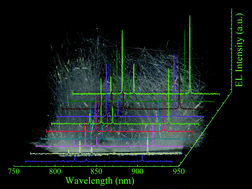An electrically driven whispering gallery polariton microlaser
Abstract
Near-infrared micro/nanolaser devices utilizing low-dimensional semiconductors can provide essential building blocks to achieve integrated optoelectronic devices and circuitry for advanced functionalities and are compatible with on-chip technologies. Although significant progress has been made through using narrow-band semiconductor micro/nanostructures to realize near-infrared stimulated radiation at room temperature, severe challenges still remain involving much lower quantum efficiencies and higher auger recombination. Herein, we report an experimental realization of a current-injection semiconductor polariton device made of a ZnO microwire via Ga-doping (ZnO:Ga MW) and p-type GaAs template. The device can emit polaritonic illumination directly from sharp edges of the hexagonal MW. The experimental results of angle-resolved electroluminescence measurements reveal a typical anticrossing feature between excitons and cavity modes, unambiguous evidence of the strong exciton–polariton coupling, with corresponding Rabi splitting energy extracted to be about 195 meV. As the applied bias goes above a certain value, electrically driven whispering gallery lasing action was achieved in the near-infrared spectrum, and the lasing features can be assigned to the exciton–polariton effect. The results not only can afford insights into the development of low-threshold coherent light sources via the exciton–polariton effect, but also can expand the fabrication of low-dimensional, near-infrared microlaser devices.



 Please wait while we load your content...
Please wait while we load your content...